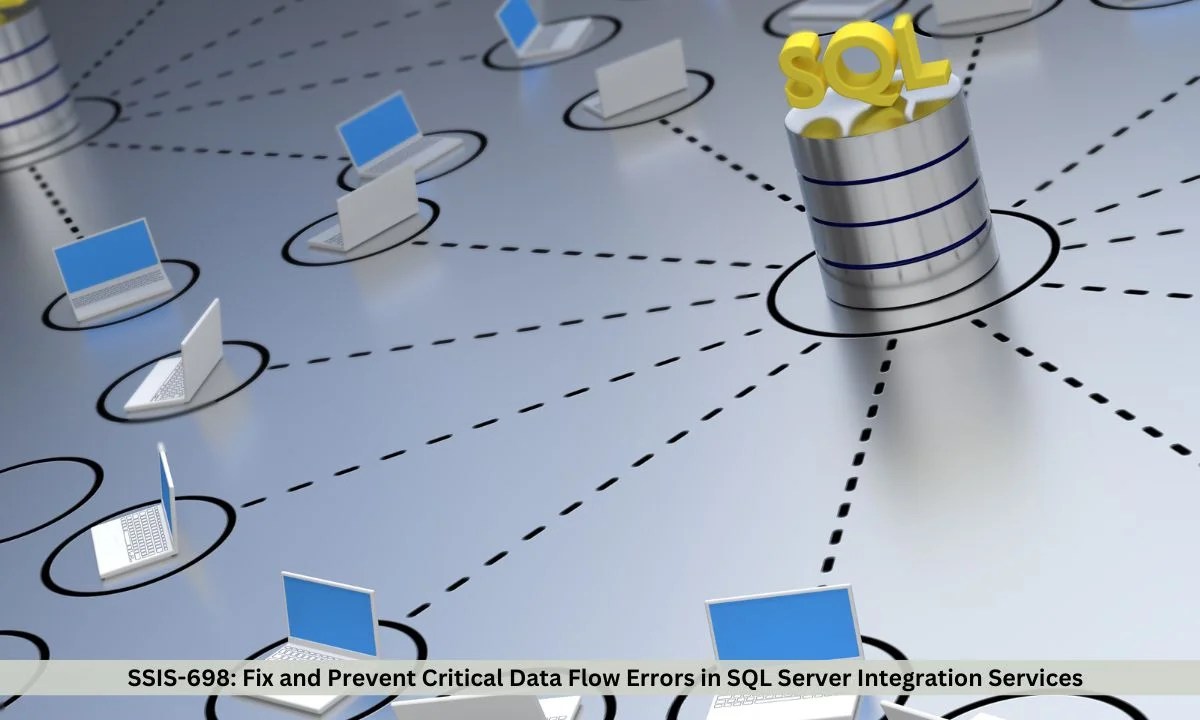SSIS-698, Microsoft SQL Server Integration Services (SSIS) is a powerful platform for building enterprise-level data integration and transformation solutions. SSIS is primarily used in data warehousing, but it also helps automate tasks such as data extraction, transformation, and loading (ETL). However, even the most advanced systems encounter errors. Understanding SSIS error codes is crucial for diagnosing and resolving issues efficiently. One such error code, SSIS-698, is particularly known for disrupting the data flow process. In this article, we’ll provide an in-depth exploration of SSIS-698, why it happens, and how you can resolve it.
What is SSIS-698?
SSIS-698 is an error code associated with SQL Server Integration Services (SSIS), which indicates that an issue has occurred within the data flow task during the execution of a package. This error often relates to issues with data mismatches, invalid mappings, or metadata misconfigurations. Unlike other common SSIS errors, such as permission or connection errors, SSIS-698 typically involves complications in the transformation or loading of data from sources to destinations, particularly when there are structural changes in the data flow pipeline.
The Role of SSIS in Data Integration
SSIS plays a critical role in the world of data integration by facilitating the movement of data between different systems, databases, and files. It allows businesses to automate the ETL process, ensuring that data is consistently and accurately transferred across platforms. Error handling in SSIS is vital because, during this data flow, various problems can arise—ranging from simple connection issues to complex data inconsistencies. Handling errors like SSIS-698 becomes crucial to maintaining the reliability and stability of data workflows in enterprise systems.
Read Also: KissAsian: Unlock the Best of Asian Entertainment

Unpacking the SSIS-698 Error
When SSIS-698 occurs, it generally points to a problem within the data flow task, often related to an inconsistency in the expected data types, metadata, or flow configurations. This error could be triggered by a variety of factors, including changes in the structure of source tables, mismatches between data types, or improper handling of null values. Symptoms of this error usually include the failure of a data flow task, visible warnings in the execution log, and an explicit error message referring to SSIS-698. It’s essential to understand the underlying cause to implement an appropriate fix.
Causes of SSIS-698
There are several common causes behind the SSIS-698 error:
- Data Flow Issues: One of the most frequent causes is data flow problems, where data types from source and destination don’t align correctly. For example, a column expected to contain an integer might have a string instead, leading to a failure.
- Invalid Data Mappings: If the columns in the source and destination systems are mismatched in terms of data types or structure, SSIS-698 may be triggered. This typically happens when changes are made to source data but not reflected in the SSIS package.
- Misconfigurations in Connections or Metadata: Misconfigurations, such as incorrect connection strings, column names, or invalid metadata, can also cause SSIS-698.
- Coding Mistakes: Small coding errors, such as failing to account for null values or incorrect expressions, can lead to SSIS-698 errors during the execution of a package.
Diagnosing SSIS-698
To effectively diagnose SSIS-698, begin by analyzing the execution logs. SSIS logs provide detailed information about the source of the error, including which component in the data flow task failed. Pay close attention to any warnings or other error messages that might give clues about mismatches or issues in the package. You can also use debugging tools built into SSIS, such as breakpoints and data viewers, which allow you to inspect data as it flows through the pipeline, helping you identify exactly where the problem lies.
Step-by-Step Guide to Fixing SSIS-698
Fixing SSIS-698 involves addressing the root cause of the error. Here’s a breakdown of common solutions:
Fixing Data Flow Issues
Begin by resolving any data mismatches. This could mean transforming data types to ensure they align properly between the source and destination. You should also ensure that null values are being handled correctly and that type conversions are explicitly defined to prevent mismatches.
Addressing Metadata Issues
If the error stems from metadata issues, review the structure of your source and destination tables. Ensure that column mappings are valid, and that the package is referencing the correct metadata. It may also be necessary to refresh or update the metadata in the package to reflect any recent changes in the data sources.
Optimizing Error Handling in SSIS
Configuring error outputs in SSIS allows for better error handling. Instead of allowing the entire package to fail, you can redirect problematic rows to an error log. This makes it easier to isolate and troubleshoot specific issues without disrupting the entire data flow.
Preventing Future SSIS-698 Errors
Prevention is key when it comes to avoiding SSIS-698 and other similar errors. Here are a few best practices:
- Validate Data: Regularly check your data sources and ensure that the data structure remains consistent with the SSIS package. This includes checking column names, data types, and metadata regularly.
- Automate Testing: Set up automated tests to simulate your data flow. These tests can detect mismatches or errors before they escalate to production, allowing you to fix them early in the development process.
- Maintain Efficient SSIS Packages: Keep your SSIS packages updated and optimized. As your data systems evolve, ensure that your SSIS packages are modified to reflect changes in the data flow, metadata, and sources.
Read Also: GoneWildAudio: Discover A Extremely Unique Audio

Real-World Examples of SSIS-698 Errors
To further illustrate SSIS-698, here are some real-world scenarios:
- SSIS-698 in a Data Warehousing Project: In one instance, a financial company encountered SSIS-698 when their source table underwent a schema change. A column that originally held integers began accepting string data, causing the data flow task to fail until the package was updated to account for the change.
- ETL Process Automation: Another example comes from a retail company automating their ETL processes. The introduction of a new data source with a slightly different metadata structure triggered SSIS-698. The issue was resolved by updating the package’s data flow configurations to accommodate the new data structure.
Tools and Resources for Handling SSIS Errors
To handle SSIS-698 and other errors more effectively, several tools and resources are available:
- SSIS Logging: Use SSIS’s built-in logging features to track errors and warnings. Detailed logging can provide insights into where and why failures occur.
- Third-Party Tools: Tools such as SQL Sentry or SolarWinds Database Performance Analyzer can monitor your SSIS packages in real-time, offering advanced diagnostics and troubleshooting capabilities.
Advanced Techniques for SSIS Error Handling
For more complex SSIS environments, advanced error handling techniques may be necessary. Consider implementing custom event handlers that can catch and respond to errors dynamically during package execution. Additionally, script components can provide finer control over how SSIS handles data and responds to errors, especially when dealing with non-standard data types or complex data transformations.
Key Takeaways for SQL Developers and Data Engineers
The SSIS-698 error is one of many challenges you might encounter while working with SQL Server Integration Services. To resolve this issue, you must take a methodical approach to diagnosing the error, understanding its causes, and implementing fixes. Maintaining a clean and well-structured SSIS package is key to preventing such errors from happening in the future. Regular testing, monitoring, and package updates will help ensure your data flows smoothly and efficiently.
Read Also: R Manga: Full Story, Characters, Reviews, and Where to Read Online

Conclusion
Handling errors like SSIS-698 can be frustrating, but they are a normal part of working with complex data integration systems. By following best practices, leveraging the available tools, and applying proactive monitoring, you can minimize the occurrence of SSIS-698 and ensure that your SSIS packages run smoothly. The key is to stay vigilant, adapt to changes in your data environments, and maintain a well-documented, efficient workflow.
